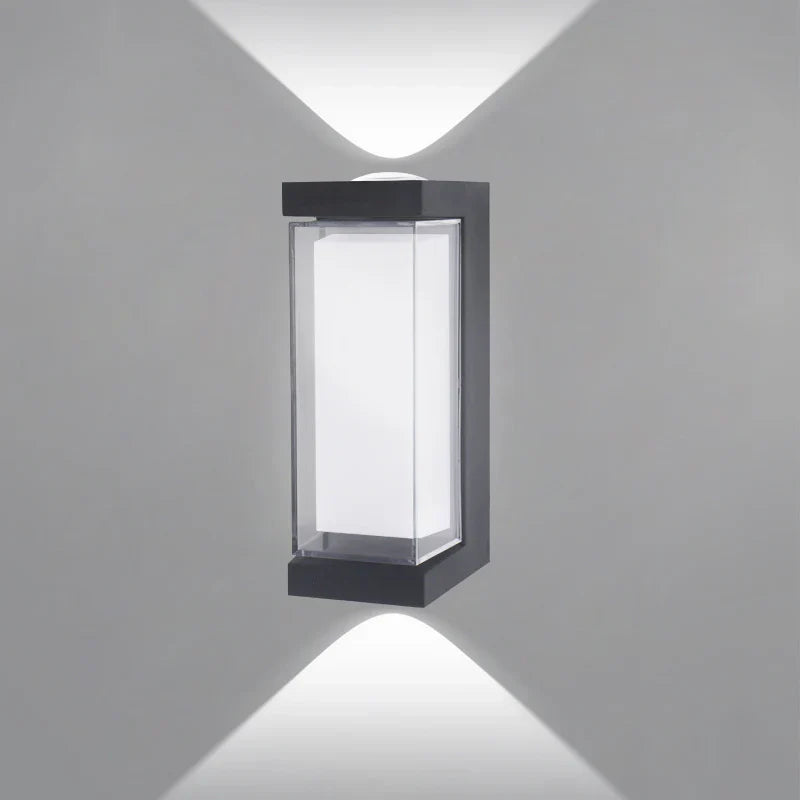LED wall lights have become widely used in modern homes, commercial spaces, and outdoor landscape lighting due to their energy efficiency, long lifespan, ease of installation, and versatile designs. However, to ensure that LED wall lights maintain stable brightness, uniform color, and safe operation over long-term use, thermal management and optical efficiency are critical performance factors. This article explores these two key aspects of modern LED wall lights and provides practical guidance for selecting high-quality products.
1. Thermal Management: The Key to LED Lifespan and Performance
The light output and lifespan of LEDs are highly sensitive to temperature. Even high-quality LED chips can experience brightness degradation, color shift, or premature failure if the heat dissipation design is inadequate.
-
Importance of Thermal Management:
-
Extended Lifespan: Excessive heat accelerates LED aging, while effective heat dissipation prolongs service life.
-
Stable Light Output: High temperatures reduce luminous efficacy, causing deviations from the rated brightness.
-
Safety Assurance: Overheating can damage the power supply or the fixture itself, posing safety risks.
-
-
Common Thermal Management Techniques:
-
Heat-Conductive Materials: Aluminum housings or high-thermal-conductivity plastics efficiently transfer heat to the environment.
-
Heat Dissipation Structures: Heat sinks, ventilation holes, and optimized fixture designs improve air circulation and cooling.
-
Intelligent Driver Control: Some advanced LED wall lights adjust current or power to maintain temperature within safe limits.
-
2. Optical Efficiency: Maximizing Light Utilization
Optical efficiency refers to a fixture’s ability to make the most of the LED’s light output and effectively illuminate the target area. High optical efficiency ensures energy savings while providing comfortable, evenly distributed lighting.
-
Factors Affecting Optical Efficiency:
-
Diffuser and Lens Design: Reflectors, lenses, or diffusion panels optimize light distribution and minimize losses.
-
Beam Angle Control: Selecting the proper beam angle for the application ensures focused or wide-area lighting.
-
Light Loss Management: Quality LEDs and optical materials reduce brightness decay caused by reflection or refraction.
-
-
Enhancing Visual Experience:
-
Uniform Illumination: Avoid glare or hotspots for a comfortable lighting environment.
-
Decorative and Atmospheric Effects: Modern wall lights with upward and downward illumination or unique shapes enhance spatial aesthetics and layering.
-
3. The Synergy of Thermal Management and Optical Efficiency
In modern LED wall light design, thermal management and optical efficiency work together:
-
Temperature Control Optimizes Light Output: Proper heat dissipation ensures LEDs operate at stable temperatures, maintaining high optical efficiency.
-
Optical Design Supports Cooling: Well-planned light distribution reduces localized heat buildup on chips.
-
Overall Performance Improvement: Wall lights that combine quality heat-conductive materials and efficient optical design deliver stable brightness, uniform color, long lifespan, and high safety.
4. Recommended Modern LED Wall Lights
For users seeking LED wall lights that excel in thermal management and optical efficiency, the following products are highly recommended:
| Product Name | Link |
|---|---|
| Waterproof LED Wall Light 7W 3000K–6500K, Square/Round, Up & Down, IP65, 4-Pack | View Product |
| Waterproof LED Wall Light 10W 3000K–6500K, White/Black/Black-Golden, Up & Down, IP65, 4-Pack | View Product |
| Waterproof LED Wall Light 6W–30W 3000K–6500K, Aluminum/Plastic, Up & Down, IP65, 2-Pack | View Product |
| 2PCS 18W Modern Waterproof LED Wall Light, Multiple Shell Shapes, Aluminum Housing | View Product |
These LED wall lights use high-quality heat-conductive materials and scientifically designed cooling structures, while optimizing light distribution and transparency, making them ideal for home, commercial, and outdoor applications.
Conclusion
The high performance of modern LED wall lights relies not only on the LED chips themselves but also on optimized thermal management and optical efficiency. Through proper material selection, structural design, and optical engineering, LED wall lights can maintain stable brightness and color, extend lifespan, enhance safety, and improve visual comfort. Paying attention to these core factors ensures a high-quality lighting experience for residential, commercial, and outdoor spaces.

